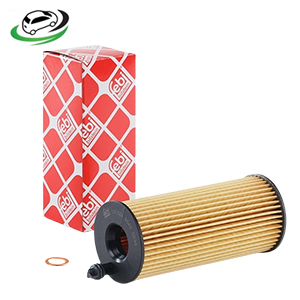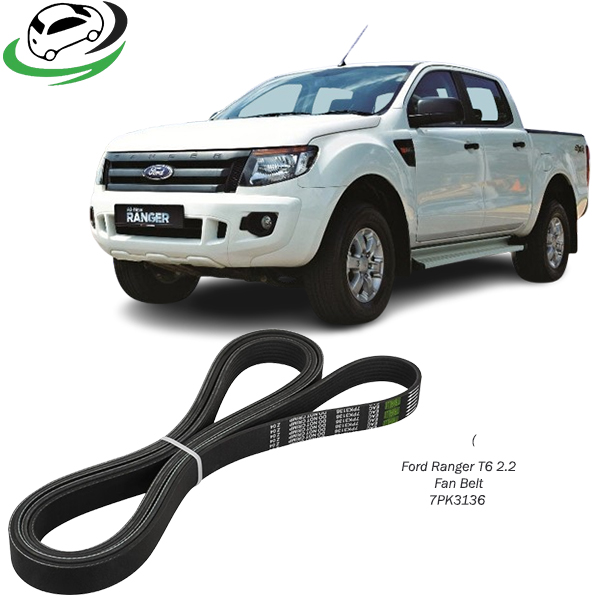-11%
Get Ford Ranger T6 2.2 Fan Belt 7PK3136 in Kenya
A fan belt, also known as a serpentine belt or accessory drive belt, is a crucial component in an internal combustion engine. It connects various engine accessories to the crankshaft, enabling them to function properly. Here’s an in-depth look at the fan belt, its functions, types, maintenance, and troubleshooting.
Functions of a Fan Belt
Power Transmission
The primary function of a fan belt is to transfer power from the engine’s crankshaft to various accessories, such as the alternator, water pump, power steering pump, air conditioning compressor, and sometimes the radiator fan. This power transmission is essential for the proper functioning of these components.
Alternator
The alternator generates electrical power to charge the battery and power the electrical systems of the vehicle when the engine is running. Without a properly functioning fan belt, the alternator cannot operate, leading to a dead battery and a non-functional electrical system.
Water Pump
The water pump circulates coolant through the engine to maintain optimal operating temperatures and prevent overheating. A failing fan belt can result in the water pump not operating, which can cause engine overheating and significant damage.
Power Steering Pump
The power steering pump provides the hydraulic pressure needed for the power steering system. If the fan belt breaks or slips, the power steering pump will not function, making the vehicle difficult to steer.
Air Conditioning Compressor
The air conditioning compressor relies on the fan belt to function. If the belt fails, the air conditioning system will not work, leading to a lack of cooling in the vehicle cabin.
Types of Fan Belts
V-Belt
The V-belt is a single, continuous belt with a V-shaped cross-section. It is commonly found in older vehicles and usually drives a single accessory. The V-shape allows for better grip and tension, reducing the risk of slipping.
Serpentine Belt
The serpentine belt is a single, continuous belt that is longer and wider than the V-belt. It snakes around multiple pulleys, driving several accessories simultaneously. Modern vehicles predominantly use serpentine belts due to their efficiency and reduced space requirements.
Ribbed Belt
The ribbed belt, a variation of the serpentine belt, features multiple grooves running along its length. These grooves provide additional grip and flexibility, improving the belt’s performance and durability.
Maintenance of a Fan Belt
Regular Inspection
Regular inspection of the fan belt is crucial for ensuring its longevity and performance. Look for signs of wear, such as cracks, fraying, glazing, or missing chunks. Inspect the belt tension and alignment as well, as improper tension or misalignment can cause premature wear.
Tension Adjustment
Proper tension is essential for the fan belt to function correctly. Too much tension can put excessive stress on the belt and accessories, while too little tension can cause slipping and reduce efficiency. Some vehicles have automatic belt tensioners that maintain the correct tension, while others may require manual adjustment.
Cleaning
Keep the fan belt and pulleys clean and free of debris. Dirt, oil, and grease can cause the belt to slip or deteriorate more quickly. Use a clean cloth to wipe down the belt and pulleys regularly.
Replacement
Fan belts should be replaced at regular intervals, as recommended by the vehicle manufacturer. Even if a belt appears to be in good condition, it can still fail unexpectedly due to age and fatigue. Timely replacement can prevent breakdowns and costly repairs.
Troubleshooting Fan Belt Issues
Squealing Noise
A common issue with fan belts is a squealing noise, especially when starting the engine or during acceleration. This noise can be caused by improper belt tension, misalignment, or a worn belt. Adjusting the tension, realigning the belt, or replacing it can resolve the issue.
Belt Slippage
If the fan belt slips off the pulleys, it may indicate improper tension, misalignment, or worn pulleys. Check the tensioner, pulleys, and belt condition. Adjust or replace components as needed to ensure proper belt alignment and tension.
Overheating
Engine overheating can occur if the fan belt fails, preventing the water pump from circulating coolant. Check the belt for signs of wear or damage and replace it if necessary. Additionally, inspect the water pump and cooling system for any issues.
Loss of Power Steering
If the power steering becomes difficult or unresponsive, it could be due to a failing fan belt. Inspect the belt for damage and ensure it is properly tensioned and aligned. Replace the belt if necessary.
Electrical Issues
Electrical issues, such as a dead battery or dim lights, can result from a failing fan belt that prevents the alternator from charging the battery. Inspect the belt and replace it if worn or damaged.
Follow us on Facebook for more parts.



